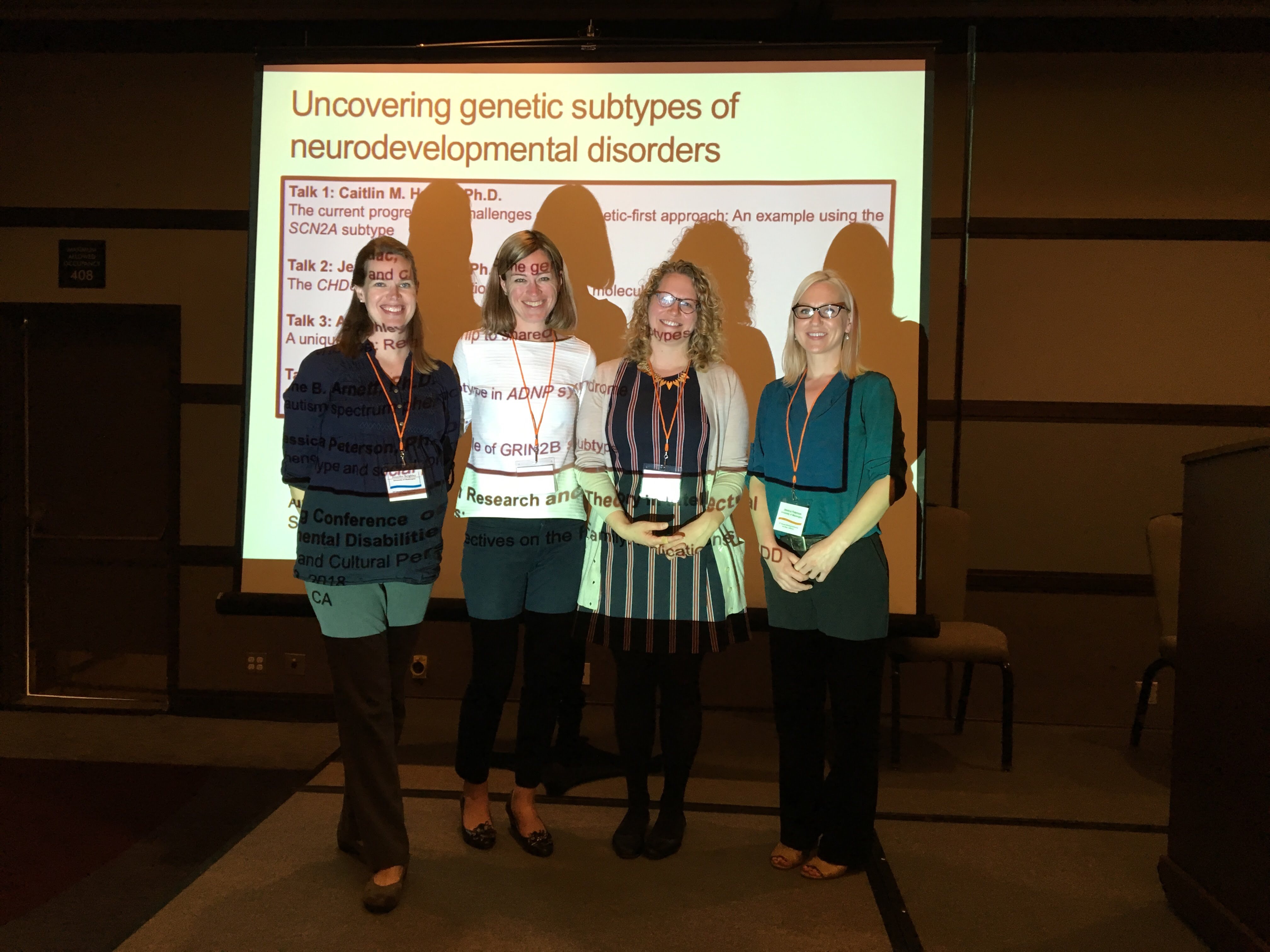Five members of the Bernier Lab recently attended the Gatlinburg Conference. I interviewed our EEG and Eye Tracking research coordinator Brianna Cairney, who was in attendance, about her experience.
What is this conference about and how does it relate to the research we conduct here in our lab?
The full title of the conference is The Gatlinburg Conference on Research and Theory in Intellectual and Developmental Disabilities. As the title suggests, this conference is focused on research surrounding intellectual and developmental syndromes such as Autism, Downs, Fragile X, ADHD, etc. Gatlinburg has met annually since the 1960s, highlighting a different theme each year. This year’s theme was “Biological and Cultural Perspectives on the Family: Implications for IDD” which directly relates to our work in the lab investigating potential biomarkers of neurodevelopmental disorders using EEG and Eye Tracking measures.
What was the Bernier Lab’s contribution to the conference?
All four of our postdocs, Drs. Caitlin Hudac, Jen Beighley, Anne Arnett, and Jess Peterson, presented a fascinating symposium panel entitled “Uncovering Genetic Subtypes of Neurodevelopmental Disorders.” Each postdoc described the features of a different genetic subtype (SCN2A, CHD8, ADNP, and GRIN2B) that we observed through a variety of behavioral, cognitive, and electrophysiological measures. The four presentations paralleled one another nicely, in part because each presenter used the same unique approach, looking broadly at clinical diagnosis and behavior, and then gradually honing in on information processing, neural activity, and finally genes.
I presented a poster entitled “Evaluation of EEG Success in Populations with Neurodevelopmental Disorders.”
What was your poster about?
Using EEG trail retention data, I showed that although there is a correlation between IQ and EEG success, participants with even very low IQ are, by and large, able to successfully complete EEG. Specifically, 95% of our participants completed EEG. Notably, over 65% of participants with an IQ of less than 55 retained a desirable number of usable trials. Personally, I think this is very exciting, because we are able to capture information about the neural processes of children who might otherwise struggle to complete traditional cognitive testing. For example, three children in my sample were unable to complete IQ testing, yet two of them still successfully completed EEG. Using EEG data, we can learn more about how these kids process information around them and how certain cognitive processes might relate to some of the syndromic features of their diagnoses. For example, in a recently published study by Dr. Hudac et al. (2018), we found that children with autism display a heightened neural response to novel sounds in an auditory task, and was correlated with atypical sensory sensitivities.
The second part of my poster described different strategies we use to ensure participant comfort and compliance before and during sessions, such as sending home a practice EEG netcap and tolerance training plan a few weeks prior to the session and being flexible to the participant’s unique needs and abilities during the session.
What were some of your favorite parts of the conference?
There was a fantastic symposium by Drs. Jane Roberts, Shafali Jeste, Heather Cody Hazlett, and Susan Rivera entitled “Benefits and Challenges of Biomarker Research: Lessons Learned from Studies of Peripheral and Neural Indicators in IDD.” A large part of my job involves conducting EEG and Eye Tracking experiments and I’ll be the first to admit that I’m pretty enthusiastic about using neurophysiological measures to understand IDD. The women presenting in this panel are all prominent researchers who use EEG/ERP, MRI, heart rate, and other physiological measures in their work. They highlighted the advantages of biomarker research (e.g. advances in technology, affordability, ease of utility, theoretical advances, objectivity, ability to elicit responses that are otherwise unobservable) but balanced their praise with a healthy amount of skepticism, identifying some of the challenges and risks. Dr. Roberts cautioned against “objectivity bias” – valuing certain measures (i.e. EEG, eye tracking) as more valuable than behavioral measures, or crediting such methods as more objective than they actually are. She also emphasized the lack of normative data, the challenges surrounding tolerance and compliance to many biomarker measures, and the expertise required to process and interpret biomarker data.
I also really liked the vibe at Gatlinburg. This conference is largely composed of graduate students, postdocs, and fellows, which results in a supportive, welcoming environment where learning and asking questions is encouraged. Additionally, the majority of attendees are female – it’s always cool to see women playing an active role in science and research, especially so in leadership roles. Finally, the conference was held in San Diego this year, so I got to experience a few days of sunshine, which was a welcome break from the gray dreary “April showers” of Seattle. Also I rode a rollercoaster. Twice. And ate tacos every day.

